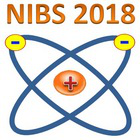Speaker
Dr
Mamiko SASAO
(Doshisha University)
Description
Recently, it has been reported that a high production rate of negative hydrogen
ion (H-) was observed from a nano-porous C12A7 electride surface immersed in
hydrogen/deuterium low-pressure plasmas [1]. The H- ion energy spectrum seemed to indicate that the dominant process leading to H- ion formation was through kinetic desorption induced by low energy ions. Fundamental understanding of the production mechanism is not fully clarified yet. Negative ions can be produced through (1) charge exchange(electron pick-up) reflection process and (2) desorption process by sputtering.
When the plasma electrode was fabricated with the C12A7 electride, it is not clear
whether the high production rate through desorption process is effective in a real
ion source, or not. In addition, it is not clear whether the high production rate of H-
ions on the C12A7 electride is owing to the characteristic feature of the low-work
function, or the cage structure that contains H- ions in it.
Present work deals with negative ion production on a C12A7 electride
surface for a cesium free ion source, and H- extraction from a single-hole plasma
electrode. In order to investigate these problems, a small device with an ECR
plasma source and C12A7 electride plasma grid has been constructed. The work
function of the plasma gird surface can be monitored by injecting lasers of various
wavelength, and extracted H- current will be measured.
[1] M. Sasao, et al, Applied Physics Express 11, 066201 (2018)
Primary author
Dr
Mamiko SASAO
(Doshisha University)
Co-authors
Mr
Daishuke Kuwahara
(Doshisha University)
Prof.
Gilles Cartry
(Aix-Marseille University)
Mr
Masumi Kobayashi
(Doshisha University)
Prof.
Motoi Wada
(Doshisha University)
Ms
Roba Moussaoui
(Aix-Marseille University)
Mr
Takayuki Eguchi
(Doshisha University)

